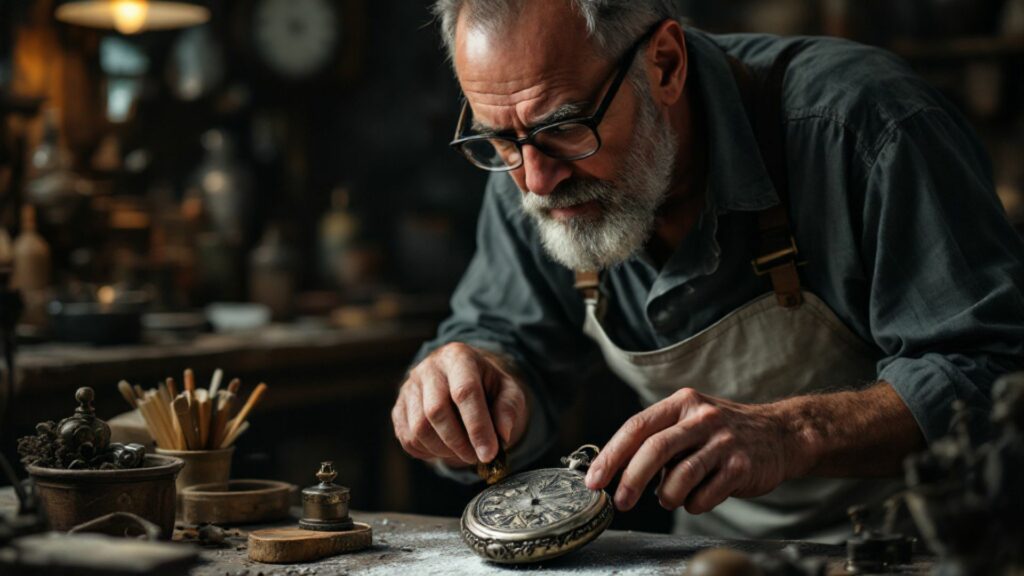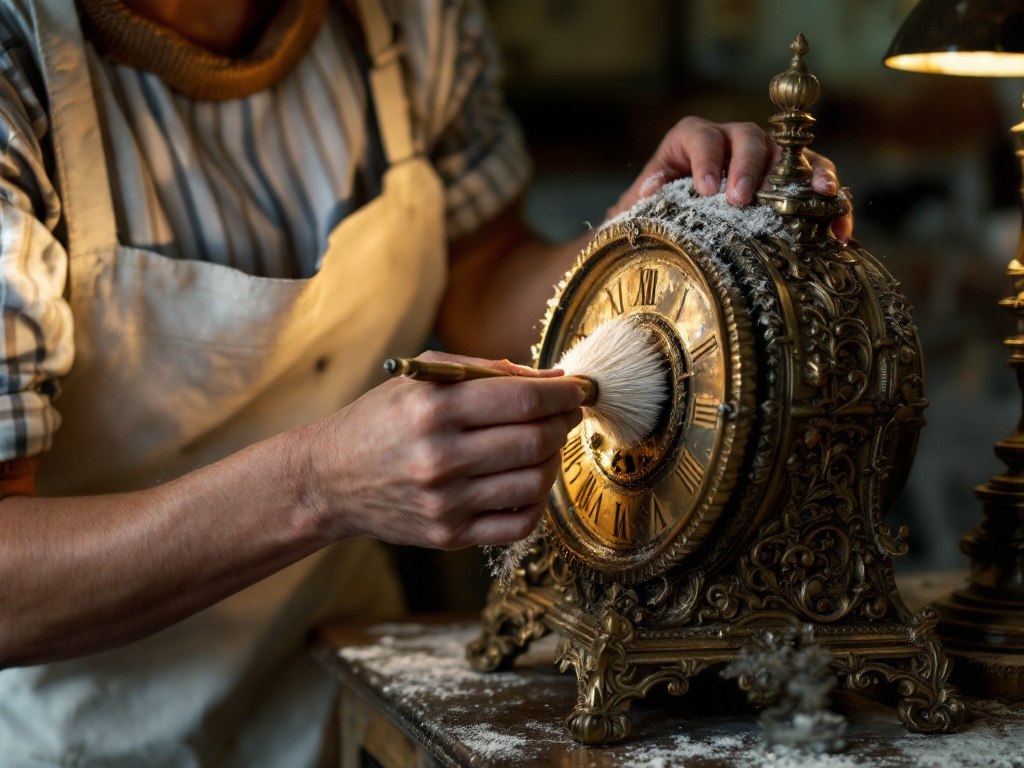Home » Effectively Clean Antique Metal
How to Safely and Effectively Clean Antique Metal

Identifying what type of metal you’re dealing with is step one in cleaning antiques The key to preserving their beauty is knowing how to effectively clean antique metal without causing damage . Believe it or not, knowing whether it’s brass, silver, or iron can save you a ton of headaches down the road. Each metal has its own quirks, especially when it comes to cleaning them. Recognizing these differences is key to preserving your treasures. But how do you do that without ruining the patina or value?
Now, let’s get into one of the trickier aspects: patina versus dirt. Antique metals take pride in their patina. It’s that signature aged look that adds character and tells a story. Sometimes scrubbing this off isn’t the best idea. On the flip side, dirt is just, well, dirt. So, knowing when to clean and when to preserve is super important. A bit of knowledge and a keen eye can help maintain the balance between cleanliness and historical charm. Let’s break it down step by step.
Methods of Safely and Effectively Cleaning Antique Metal
When it comes to cleaning antique metal, one size definitely doesn’t fit all. Silver loves a gentle polish with a soft cloth and mild cleaner, while brass and copper shine up nicely with a simple mix of vinegar, salt, and flour. Iron’s a bit trickier since it rusts easily—stick to a dry brush and a little oil to keep it in good shape. And before you go all in, always test your cleaning method on a small, hidden spot first. You don’t want to accidentally strip away that beautiful patina!
The key here? Go easy! Harsh chemicals and heavy scrubbing can do more harm than good, messing with the metal’s original character. Instead, reach for non-abrasive cleaners or natural options like baking soda or lemon juice for light tarnish. Regular dusting and smart storage go a long way, too—sometimes, less is more when it comes to cleaning antiques. And if you’re ever unsure, a quick chat with a professional can help you avoid costly mistakes!
Understanding Your Antique Metal
Before grabbing the nearest cleaner, take a moment to identify the type of metal you’re working with. Because different metals require different care, using the wrong method can cause irreversible damage.
Common Types of Antique Metal
Brass & Copper—Develop a natural patina over time. Tarnish is common but can be removed.
Silver—Prone to tarnishing but requires gentle cleaning to avoid scratches.
Cast Iron & Wrought Iron—Susceptible to rust, needing special care.
Tin & Aluminum—Softer metals that require non-abrasive methods.
💡 Pro Tip: If you’re unsure about the metal type, test a small hidden area first!
Effectively Clean Antique Metal By Type
Brass & Copper
Copper and brass can develop a dull, greenish patina over time. While some collectors love the aged look, you might want to restore their shine.
Lemon & Salt: Cut a lemon in half, dip it in salt, and rub it over the metal. Rinse and dry thoroughly.
Baking Soda Paste: Mix baking soda with water to create a paste. Apply, let it sit, then wipe clean.
Best Commercial Product: [Insert product name]—Works wonders for stubborn tarnish!
Silver is delicate, so harsh scrubbing is a no-go. Instead:
Aluminum Foil Trick: Line a bowl with aluminum foil, add baking soda and boiling water, and soak silver for a few minutes. Tarnish transfers to the foil!
Mild Soap & Water: If your silver is lightly tarnished, warm soapy water does the trick.
Recommended Silver Polish: [Insert product name]—Great for restoring shine safely.
Cast Iron & Wrought Iron
Rust is the biggest issue with iron-based antiques. To tackle it:
Vinegar Soak: Submerge rusty items in white vinegar for a few hours, then scrub with a brush.
Electrolysis Method: A bit more advanced but works wonders for heavy rust removal.
Prevent Future Rust: Apply a light coat of mineral oil or wax after cleaning.
Tin & Aluminum
These metals scratch easily, so be gentle!
Mild Soap & Soft Cloth: The safest approach. Avoid abrasive cleaners.
White Vinegar & Baking Soda: If deeper cleaning is needed, use this combo.
Avoid Water Exposure: Dry thoroughly to prevent oxidation.
Dealing With Heavy Rust & Corrosion

If your antique metal piece is heavily rusted, don’t panic! There are effective solutions:
✔ White Vinegar Soak: Dissolves rust without scrubbing damage.
✔ Lemon & Baking Soda: A natural alternative that lifts rust.
✔ Rust Converters: Products that stop rust in its tracks and prevent further damage.
🚫 Avoid using steel wool or harsh abrasives, as they can scratch and damage the surface.
Restoring Shine Without Damage
Want your antique metal to shine like new? Follow these safe polishing techniques:
Microfiber Cloth & Gentle Polish: The best way to buff metals without causing scratches.
Waxing & Sealing: A thin coat of wax helps preserve the finish and prevents oxidation.
Avoid Over-Polishing: Too much polishing can strip away natural aging that adds character.
Best Products To Effectively Clean Antique Metal
| Product Name | Best For | Key Features |
|---|---|---|
| Nevr-Dull Magic Wadding Polish | Silver and Brass | Pre-treated cotton wadding that gently removes tarnish without scratching. Easy to use and leaves a protective layer. |
| Weiman Stainless Steel Cleaner & Polish | Stainless Steel Appliances | Cleans, shines, and protects stainless steel surfaces, leaving a streak-free finish. |
| Brasso Multi-Purpose Metal Polish | Brass, Copper, Chrome | Time-tested formula that restores shine and removes tarnish effectively. |
| Barkeeper’s Friend Cleanser & Polish | Multiple Metals | Versatile cleaner that tackles rust, tarnish, and mineral deposits on various metal surfaces. |
| Flitz Metal Polish Paste | Brass, Copper, Silver, Aluminum | Non-abrasive paste that cleans, polishes, and protects metal surfaces, leaving a brilliant shine. |
Note: Always test any product on a small, inconspicuous area first to ensure compatibility with your antique piece. Additionally, follow the manufacturer’s instructions for optimal results.
Common Mistakes To Avoid
🚨 Don’t make these cleaning mistakes!
❌ Using Harsh Chemicals: Strong acids or ammonia can permanently damage metal.
❌ Over-Cleaning: Removing too much patina can lower antique value.
❌ Skipping the Drying Step: Leaving moisture can lead to rust and corrosion.
Conclusion

Cleaning antique metal doesn’t have to be intimidating. By choosing the right method, you can effectively clean antique metal while preserving its beauty and history. Whether you’re tackling tarnished silver, rusty iron, or dull brass, these techniques will help bring your treasures back to life.
Have a favorite cleaning method or product? Share your experience in the comments below! ✨
Now that you have a better idea of how to maintain the quality of your antique metal, you may be interested in reading the following articles: